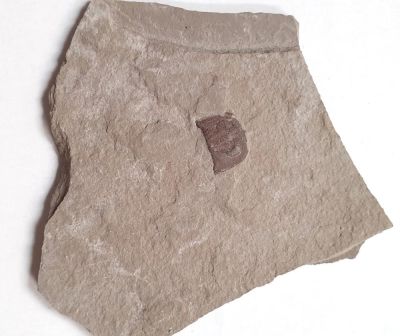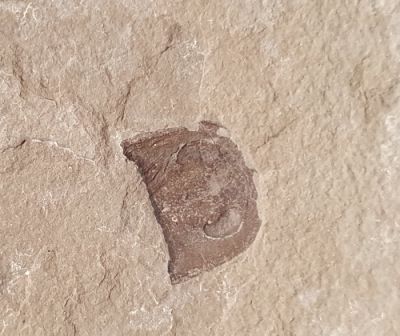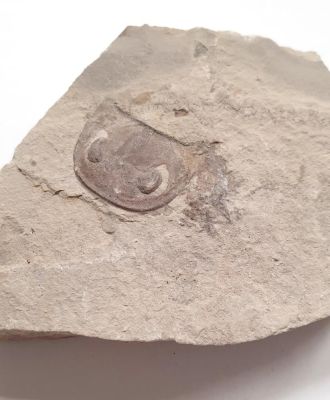Eurypterus podolicus
Well preserved cephalothorax (a fused head and thorax) on matrix.
Age: Ordovician, Wenlock;
Finding region: Kamjanez-Podilskyj, Ukraine
Size of head: 1 cm
Size of matrix: approx. 4 - 8 cm
Eurypterids, also called sea scorpions for their pointy telson, evolved in the Ordovician. They were the apex predators of the upper Ordovician, Silurian and lower Devonian seas, and reached their largest biodiversity during this time. The largest representatives of this order could reach up to 3 meters, while E. podolicus only was a few modest centimeters long. The Suborder of Eurypterina, to which Eurypterus of course belongs, modified their last pair of legs into swimming paddles. They had two respiratory systems - book gills and Kiemenplatten - and trace fossils indicate that they could go on land. They never fully transitioned, however, probably because like their relatives the horseshoe crabs they chewed with the bases of their legs outside of their mouth, which would have been more efficient underwater than on land. In the seas, fish started outcompeting them, which drove the remaining species into the rivers. In the Permian there were only a few species left, among them the heaviest arthropods to ever exist. During the Permo-Triassic extinction the last members of this group went extinct.
The colors on the pictures may differ slightly from the original due to technical reasons.
Login



